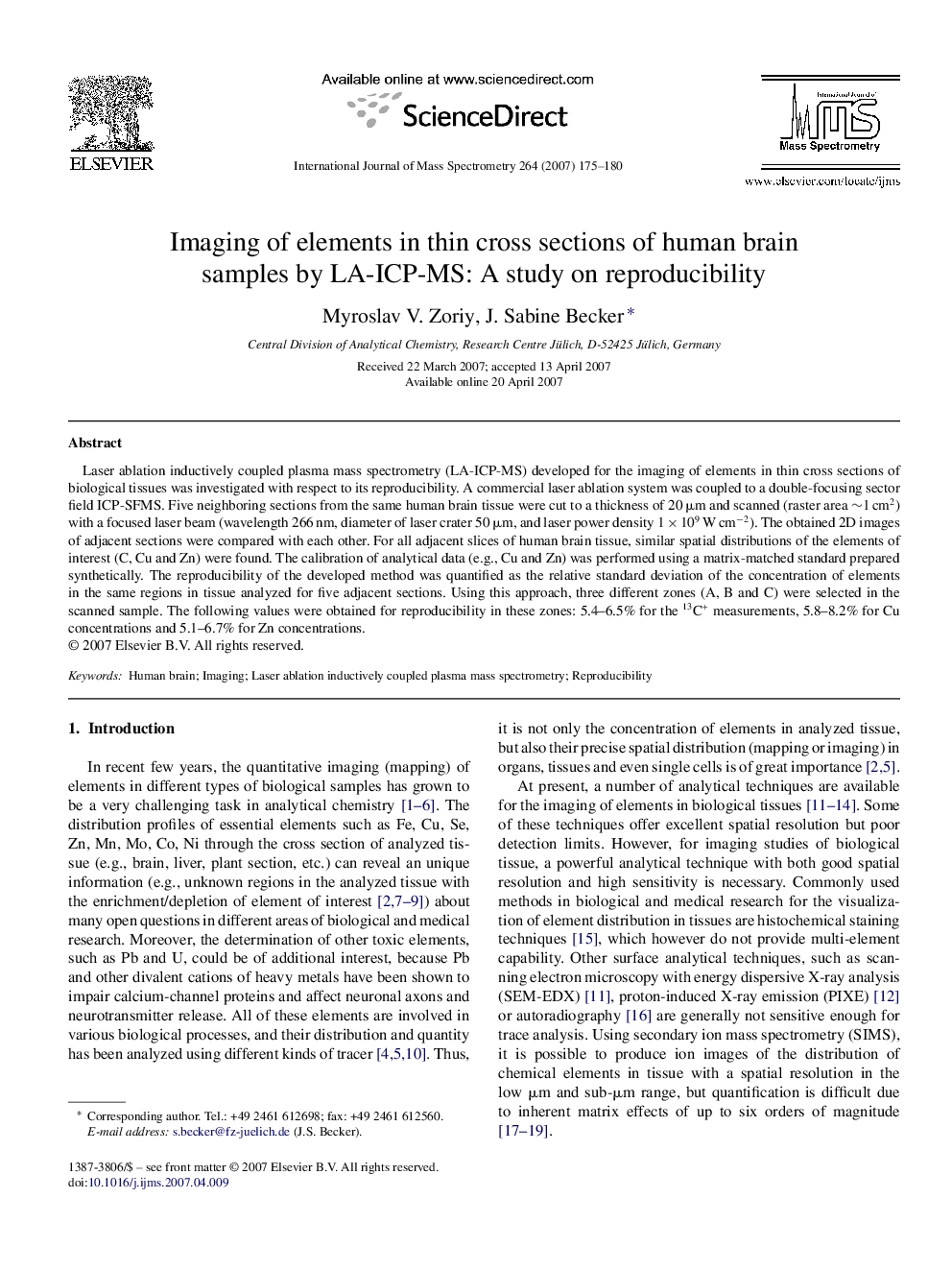| Article ID | Journal | Published Year | Pages | File Type |
|---|---|---|---|---|
| 1194547 | International Journal of Mass Spectrometry | 2007 | 6 Pages |
Laser ablation inductively coupled plasma mass spectrometry (LA-ICP-MS) developed for the imaging of elements in thin cross sections of biological tissues was investigated with respect to its reproducibility. A commercial laser ablation system was coupled to a double-focusing sector field ICP-SFMS. Five neighboring sections from the same human brain tissue were cut to a thickness of 20 μm and scanned (raster area ∼1 cm2) with a focused laser beam (wavelength 266 nm, diameter of laser crater 50 μm, and laser power density 1 × 109 W cm−2). The obtained 2D images of adjacent sections were compared with each other. For all adjacent slices of human brain tissue, similar spatial distributions of the elements of interest (C, Cu and Zn) were found. The calibration of analytical data (e.g., Cu and Zn) was performed using a matrix-matched standard prepared synthetically. The reproducibility of the developed method was quantified as the relative standard deviation of the concentration of elements in the same regions in tissue analyzed for five adjacent sections. Using this approach, three different zones (A, B and C) were selected in the scanned sample. The following values were obtained for reproducibility in these zones: 5.4–6.5% for the 13C+ measurements, 5.8–8.2% for Cu concentrations and 5.1–6.7% for Zn concentrations.
